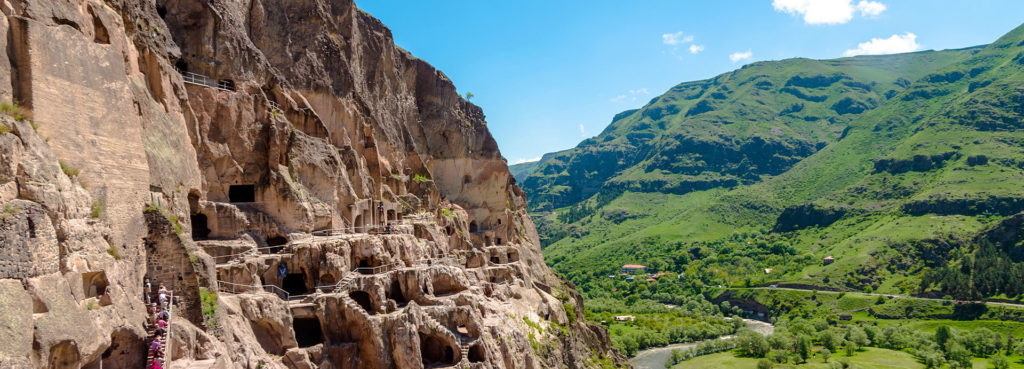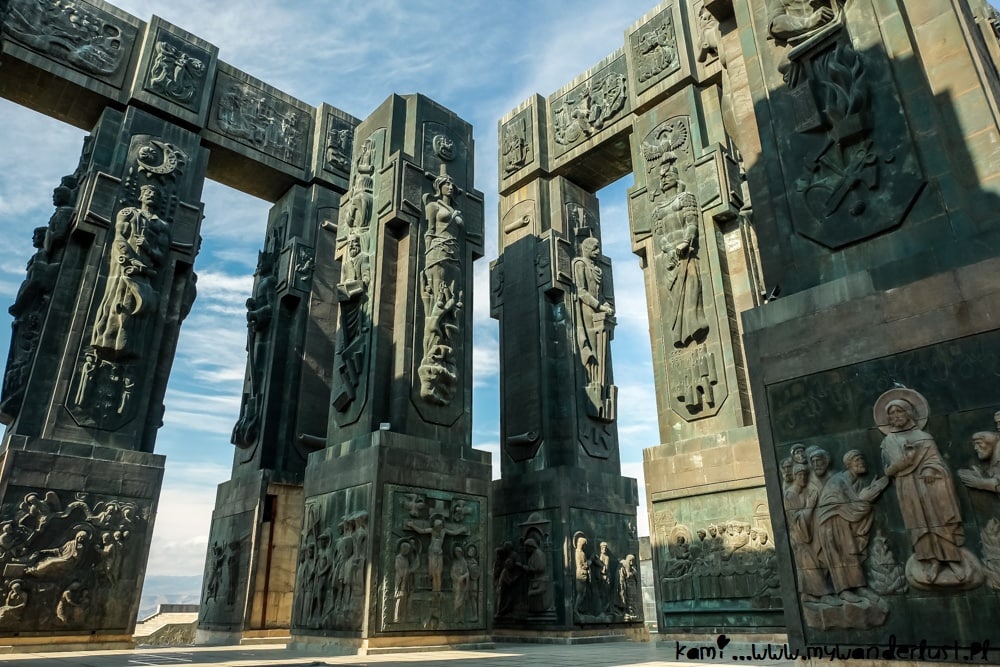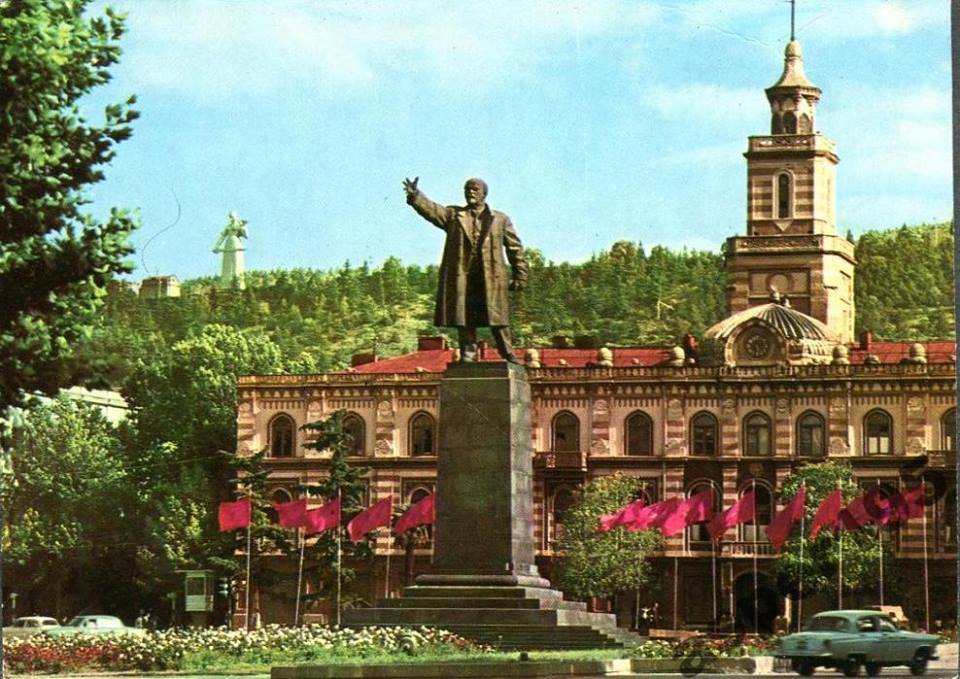“Georgians – The First Europeans”

The Georgian Homo-sapiens – “Homo-Georgicus”, dates all the way back to 1.8 mils. Year old county of Dmanisi. The Discovery of these ruins sparked an admirable theory that Georgians are – “The First Europeans”. Of course, the Dmanisi people didn’t represent a civilization, but it’s a very big footnote in our history. Civilizations came much later in the 8th century BC, represented by Colchis and Diaokhi (Iberia), both speaking a unique Kartvelian language and representing Georgian ethnicity. Merging this two down the line will resolve the creation of the Kingdom of Georgia.
Life in Colchida lowlands wasn’t easy. Greeks posed a big Threat and Iberia came under influence of Alexander the Great’s armies. In the 4th Century BC. Greek culture had a massive effect on Iberia and this influence played a major role in the shaping of Georgian culture. After Macedonians, came Roman Legions under the leadership of Gnaeus Pompey Magnus in 65 BC. Iberia for the following years became a playground for Romans and Persians. War would continue till the year 298 CE when Romans were Declared winners and the Caucasus region. Later on, in the year 327 Georgian Kingdom of Iberia became one of the first states in the world to convert to Christianity.
The emergence of Georgia as a Kingdom wasn’t easy. For centuries Georgian people were divided under four different banners, these were: Tao-Klarjeti, Abkhazia and Iberia, Kartli, and Kakheti-Hereti. Byzantines had dominion over this area till the 7th century, That’s the time when the Arabs Occupation Began. Georgia suffered immensely, Divided They stood no chance against Abbasid Empire, and from 736 till 1222, Tbilisi was an Arab Emirate.
The Dynasty is Born
The situation needed to change, the only right way to start was to unify the Georgian people under one king. This marked the start of Davit III Kurapalates’ project, his son-in-law – Bagrat III of Bagrationi Dynasty. The process started in 975, Davit III was the leader of Tao-Klarjeti, He worked tirelessly on improving relationships with Byzantines so that they wouldn’t intervene and stop his plan. Next thing, his son needed to be a title claimant of every single Georgian county. First Title – Leader of Kartli – This was an easy part due to Bagrat III’s biological father being Bagrat II – Leader of Kartli. The title would pass from father to son. Second title – Leader of Tao-Klarjeti – Another easy one. By being recognized as an heir by Davit III Kurapalates’ title would pass naturally to Bagrat.

The Third Title – Leader of Abkhazia and Iberia – here the medieval intrigue games start. Theodosius – leader of Abkhazia and Iberia was Bagrat’s uncle and by fortunate circumstances, Theodosius Didn’t have a son, which gave Bagrat the ability to press his claim to the Abkhazian throne. So far everything worked out just like Davit III Wanted and Bagrat got hold of all three above-mentioned titles, but there was one left. Fourth title – Leader of Kakheti-Hereti – Kvirike II wouldn’t give up this title without the fight, Bagrat had to acquire it by power. With the strength of three counties, he easily defeated Kvirike, and finally, after years of hard work in 1010, Bagrat finished the process of unifying Georgia under the single ruling dynasty- Bagrationi.
Following years of the Bagrationi dynasty was slowly coming to the point of the Golden Age. It all started with one of the most celebrated kings of Georgia – King David IV the Builder. David prepared the fundament for Future excellence. He came to power in 1089 at the age of 16. David immediately started getting all of his vassals back under his control, by 1099 he held every Georgian province other than Tbilisi and Hereti. Still, he had enough power at this point to finally deal with Seljuq’s problem and stop paying tribute. Later in 1103-1105 David got back to Hereti and successfully raided Seljuq province of Shirvan.
Following years, he was surrounding Tbilisi and preparing for a fight to return to the capital. To stop King David Seljuqs Declared Jihad on Georgia, but got defeated in the Didgori Battle of 1121. In 1122 Tbilisi was finally retrieved after nearly 500 years of Muslim control. Georgia has united once again. King David Died in 1125 and was baptized as a saint by the Georgian orthodox church and buried in the Gelati monastery. By the King’s order, on his tombstone, among other things, the following is written: “This is Where I lie, come and step on me, step on my heart” Why such a dominant king, true saint wanted to ask this from people? It remains the mystery of one and only – King David IV the Builder.
The Golden Age
After King David in 1125 came his son Giorgi III who did a good job of maintaining the treasure and power of one before him, this period was just a calm before storm. In 1184 the reign of young Tamar started. Queen so strong that she left her name in history as a King. She wasn’t just a ruler, she was the King of Kings, The Greatest ruler of Georgia, and one of the most powerful females in all of history. She conquered the cities of Tabriz and Qazvin, made every ruler of the North Caucasus swear fealty and kneel before her, she vassalized the Kingdom of Trebizond and got Armenia under her control. She would follow her warriors to battles and pray for them while they battled in her name. She inspired Shota Rustaveli to compose his masterpiece – “Knight in Panther Skin”. Her reign finished in 1213, Baptized as a saint-like her Grandfather, and her burial site not discovered till this date. Georgia will never see a leader this strong in its history ever again.
The Downfall and Uprising
From this point, the downfall started and was impossible to doge. After Tamar’s death, her children were just a shadow of her greatness, and vassals one after another broke their oats to serve Georgia. The bigger danger was coming from the east – Mongol Empire. Georgia stood no chance and was devastated from 1221 till the 1320s when Georgia was finally liberated by King Giorgi V the Brilliant. But the triumph was cut short by the Persian Empire, which was major influencers of Georgia till 1801 when Georgia was annexed by the Russian empire. From this point, the modern political history of Georgia begins. We got our brief independence in 1918 after collapsing the Russian empire but got conquered again in 1921 by Red Army. The soviet rule continued till 1991 and the rest is the history we’ll tell our future generations.





